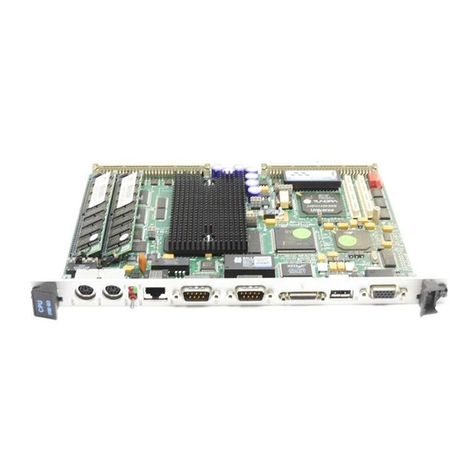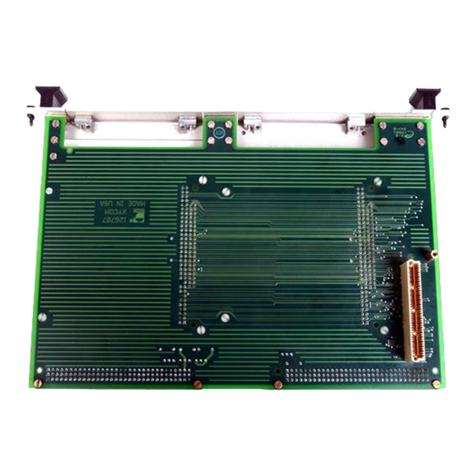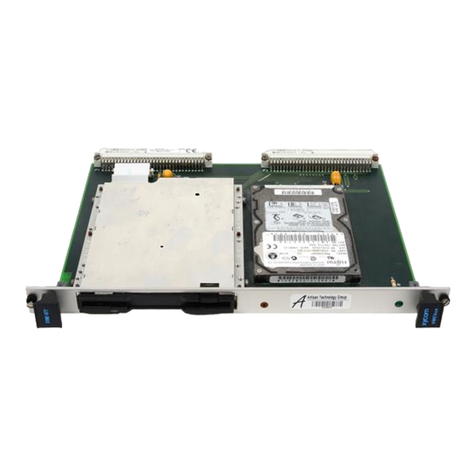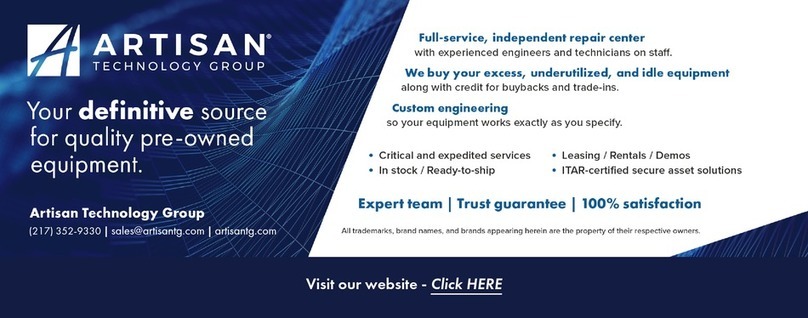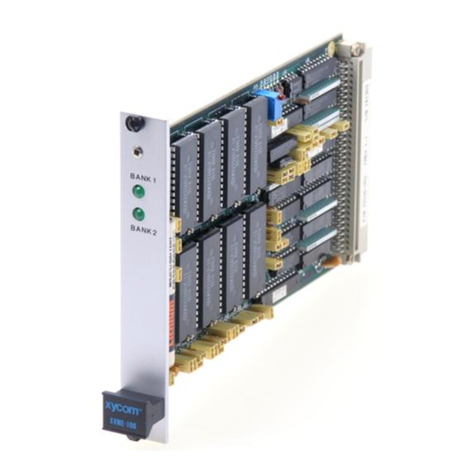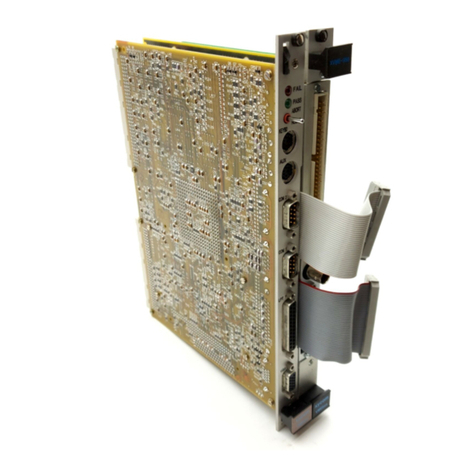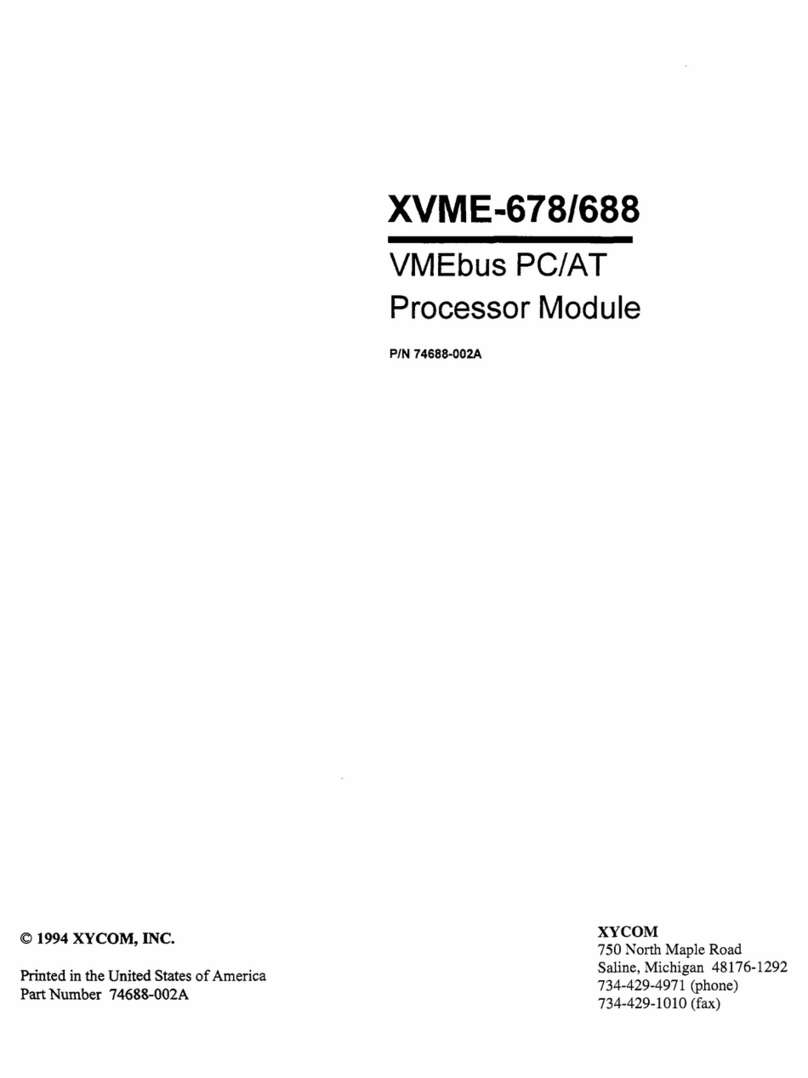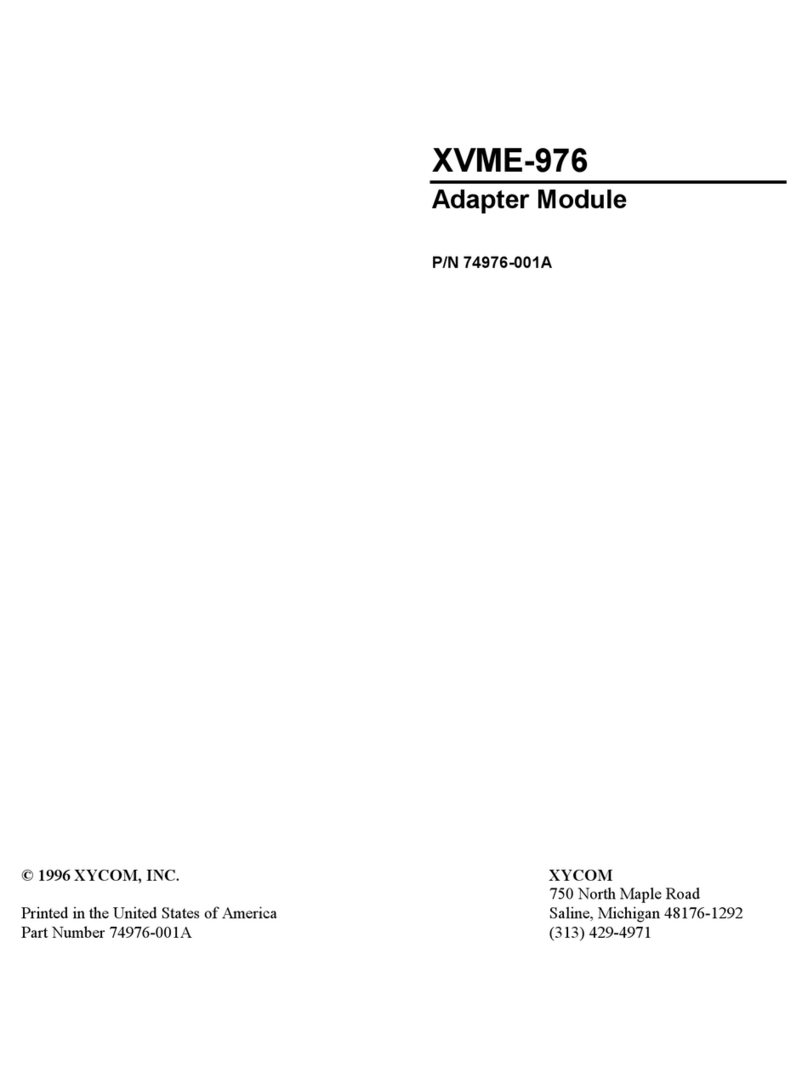
XVME-212 Manual
August, 1989
Chapter 1
INTRODUCTION
1.1 INTRODUCTION
The XVME-212 is a 32 channel, opto-isolated, digital input interface, designed to be
compatible with the VMEbus structure. The XVME-212 is capable of receiving 32 digital
inputs at frequencies up to 3.4 KHz. To ensure signal integrity, the design incorporates
integrated “switch” debouncing, as well as the protection provided by the optical isolation
of the channel inputs from the system bus structure. In addition, an on-board scanner can
be programmed to generate a VMEbus interrupt when any input changes state, thus
eliminating the need to poll the input module.
Each digital input is reverse voltage protected and is capable of handling a maximum
reverse bias of 50V DC (XVME-212/l) or
6.5V
DC (XVME-212/2). Also, the board can be
jumpered to occupy any
1K
block within the short I/O address space.
The following two versions of the XVME-212 are available:
XVME-212/l -- The
/l
version of the XVME-212 comes with an on-board, 12V DC,
isolated power supply. The 12V supply is factory-connected to the input of each channel,
thus permitting the system to monitor 12V relay contacts and switches without an external
power supply. Voltages other than the 12V may be applied to the inputs (within the
l0V-
50V input range); however, some board modification will be necessary (i.e., cutting the
well identified and easily accessible PC traces to the 12V on-board supply).
XVME-212/2 -- The /2 version of the XVME-212 is very similar to the
/I
version except
for the range of allowable input voltage and the absence of an on-board
+12V
DC power
supply. The XVME-212/2 has TTL level inputs with a
6.5V
maximum input. In addition,
the
+12V
isolated, on-board power supply is not available, replaced by wire jumpers to
the existing
+5V
supply of the VME backplane.
1.2 MANUAL STRUCTURE
This first chapter provides a functional overview of the XVME-212 and presents the
features of Xycom’s Standard I/O architecture. Operational aspects of the XVME-212 are
then explained in the following fashion:
Chapter 2
-
Installation: Information required to position the jumpers and switches
on the XVME-212, and install the module in a VMEbus chassis.
Chapter 3
-
Programming: Information required to program the XVME-212 and
read digital input signals.
The appendices at the end of this manual provide information on Xycom’s Standard I/O
Architecture, VMEbus connector/pin descriptions, module schematics, as well as a quick
reference guide to the module’s jumpers and registers.
1-l
Artisan Technology Group - Quality Instrumentation ... Guaranteed | (888) 88-SOURCE | www.artisantg.com

